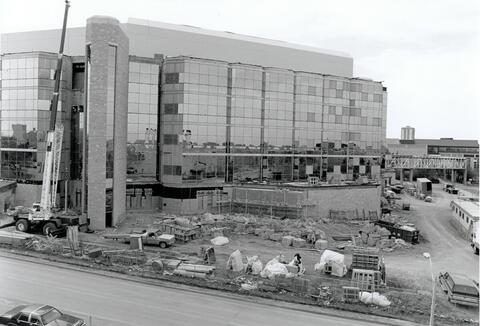
Zone du titre et de la mention de responsabilité
Titre propre
College of Agriculture Building - Construction
Dénomination générale des documents
- Document graphique
Titre parallèle
Compléments du titre
Mentions de responsabilité du titre
Notes du titre
Niveau de description
Pièce
Cote
Zone de l'édition
Mention d'édition
Mentions de responsabilité relatives à l'édition
Zone des précisions relatives à la catégorie de documents
Mention d'échelle (cartographique)
Mention de projection (cartographique)
Mention des coordonnées (cartographiques)
Mention d'échelle (architecturale)
Juridiction responsable et dénomination (philatélique)
Zone des dates de production
Date(s)
-
1990 (Production)
Zone de description matérielle
Description matérielle
7 photographs : b&w ; 25.5 x 18.5 cm
Zone de la collection
Titre propre de la collection
Titres parallèles de la collection
Compléments du titre de la collection
Mention de responsabilité relative à la collection
Numérotation à l'intérieur de la collection
Note sur la collection
Zone de la description archivistique
Nom du producteur
Historique de la conservation
Portée et contenu
Views of construction of Agriculture Building under construction.
Bio/Historical Note: Original plans for the Agriculture Building had it joining Kirk Hall, the John Mitchell Building and Crop Science, but the architects, Folstad-Friggstad, instructed to provide “a highly visible complex for the College,” proposed a stand-alone building intended to state the importance of the College of Agriculture to the University. It is the first major building on campus clad with glass rather than brick or stone. The original structure cost $91 million and was constructed between 1988-1991. It consisted of five floors, with 164 research labs, 38 teaching labs, 182 offices, 9 classrooms, 4 computer training facilities, 6 conference rooms, and 167 controlled environment plant growth facilities. In addition it has an impressive inner courtyard, the Atrium, and is home to the Kenderdine Gallery, named in honour of the University’s first art instructor. The structure had been designed to enable future expansion, and by 2000 a sixth floor was added at a construction cost of $10 million. The new addition was intended to house Animal and Poultry Science, Food Science, and Bioinsecticide Research.

